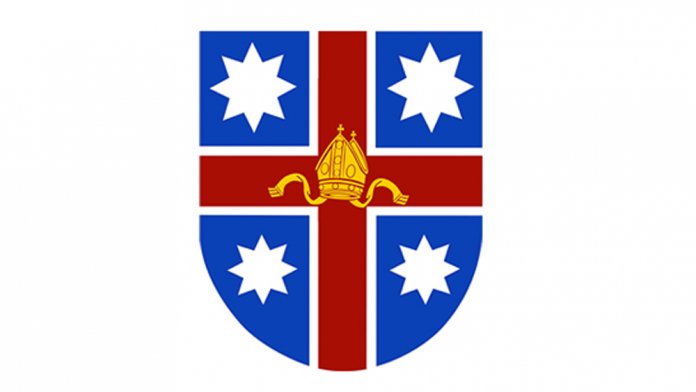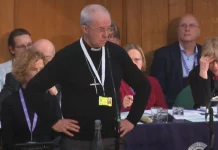Responding to a piece by theologian Andrew Goddard on the widely read (especially in England) blog Psephizo, the question is, “Have Evangelicals made secret plans to split the church?” The church in question is the Church of England, and the query arises because – you guessed it – of a dispute about introducing same-sex blessings.
If the numbers in the Church of England’s General Synod (church parliament) are anything to go by, evangelicals are about a third of that Church. Together with conservatives from the Catholic wing, they likely can block adding stand-alone same-sex blessing services because a two-thirds vote will be needed. But their Bishops have recently used their power to authorise prayers of blessing that can be used within normal services.
If Church of England evangelicals react the way American and New Zealand Anglican evangelicals have done, with same-sex marriage or blessings, one would expect some of them to leave. But for the moment – as the Goddard article explains in detail – there is a “stay in and fight” attitude, seeking some form of “differentiation” such as having their own Bishops.
But enough of the English. What about here in Australia?
There are two answers, or maybe three, to the question of whether Aussie evangelicals would split the Anglican Church of Australia.
Answer 1: The church is effectively split already
It took until 1962 for the Australian Anglicans to agree to be one national church, and retained the Church of England name until 1981. It took a heroic effort to unite the colonial dioceses (regions). The agreement was a long tussle – the dioceses by then had a long history of independence, and opposition to many attempts at a national constitution came at various times from low church Sydney on the issue of diocesan independence, or High church Brisbane on the prerogatives of bishops.
Finally, Archbishop of Canterbury Humphrey Fisher intervened, drawing up a constitution that safeguarded the concerns of Sydney – at that time, an Evangelical Diocese in a sea of mostly Anglo-Catholic ones. His solution was innovative – he gave the dioceses an unusual amount of independence, including the right not to adopt rules passed at the national level.
As discussed in Stephen Judd and Ken Cables’ Sydney Anglicans, Sydney was becoming aware that relying on the law to secure its character could be affected by changes in the Church of England. Despite opposition by some key Sydney figures, a national constitution was adopted across Australia.
This has led to widely different ‘churchpersonship’ continuing between the dioceses in Australia. Sydney, North West Australia, Armidale, Tasmania, Central Queensland can now be placed in the Evangelical camp. Canberra Goulburn and the Northern Territory have evangelical Bishops. Many of the other dioceses have a developing progressive tradition.
Back in 1955, Donald Robinson, later to be Archbishop of Sydney, declared there were two churches. “We only remain united by maintaining two denominations in one organisation and allowing members of both to call themselves Anglican,” he wrote in the evangelical Church Record. “But the real problem we have to face is that there is no unity between two divergent views at the level of local worship, which is the only valid test of unity. While this remains the case, the alleged comprehensiveness of the Church of England is a chimera.”
The banner of comprehensiveness has been taken up by two Archbishops of Brisbane, Phillip Aspinall, and his successor Jeremy Greaves. “Comprehensive Anglicanism tries to live with paradox and ambiguity by affirming the truth present in various positions which are in tension with one another,” Aspinall said in his 2021 Presidential address. “Anglicans attempt to live with apparent contradictions and paradoxes in the belief that God’s spirit will lead us more fully into the larger truth in which ultimately they will be resolved.”
Ironically perhaps, that vision of Anglicanism fits better in one part of the Anglican Church of Australia and not the other, evidence of continuing relevance of Robinson’s point.
Answer two: The Evangelicals have the numbers
For decades, likely longer, it was a given that the evangelicals would be outnumbered whenever the Anglican Church of Australia met at their general synod. But when the Covid delayed General Synod met in 2022 the numbers had shifted. “The results of the elections to the standing committee of the General Synod, held yesterday, reveal the conservatives are now in almost complete control of the national church,” Muriel Porter wrote in the Guardian
“Progressive Anglican clergy and laity from around the country who had long been members of the committee have been cast aside. From here on, the national church’s central structures will prosecute a virtual carbon copy of Sydney’s conservative position on same-sex marriage and other issues as well.”
A motion against same-sex marriage had failed to pass, but only because the House of Bishops voted narrowly against it. Consistent evangelical majorities in the Houses of Clergy and Laity were recorded. And as Porter noted, key committees were taken over by evangelicals – such as the committee to elect the next primate – the titular head of the Anglican Church of Australia.
The evangelicals faced a new reality – why leave or split the national church when they control the structures?
Answer three: The semi-detached church
The future for some Australian Anglicans in progressive dioceses will be to become semi-detached, move into a granny flat, or move up the street.
Semi-detached is The Other Cheek’s description of the expanding Trinity Network in Adelaide, which is half in and perhaps half out of the Anglican church. Trinity is formally part of the Diocese of Adelaide but has planted 13 congregations across the city and even into the neighbouring diocese of the Murray.
The network has avoided church properties for its church plants and also avoids the word “Anglican” in its description.
The “granny flat” description might apply to the Diocese of the Southern Cross, which has been set up as a “lifeboat” for parishes in progressive dioceses. It has attracted seven churches some with branch congregations. It has one church led by a woman and two former Uniting churches. It declares itself to be Anglican, although not part of the Anglican Church of Australia. Just like a granny flat in the backyard is a separate building.
The history of St John’s Wishart in Southern Brisbane is the church split question in microcosm. Peter Judge-Mears’ story of his leaving St John’s to found Southern Cross Anglican Church, Southside, was reported in The Other Cheek. But St John’s Wishart continues, led by a new minister, Michael Calder, whose evangelical cred includes being trained at the Presbyterian Queensland Theological College. His father, Mark, is the Bishop of Bathurst, who is renewing that diocese with strong evangelical ministers but who posted on Facebook after his son’s appointment was announced, “Please stop leaving the ACA.”
When evangelical breakaways happen in Anglican-land, some people will choose to stay in the mother church. Australia is following the pattern set in the US and NZ in that regard.
Perhaps a third category could be “near neighbours.” This might fit the Fellowship of Independent Evangelical Churches, originally birthed out of Sydney evangelicalism with the highly successful EV church plant on the NSW Central Coast. It has become its own denomination but trains many of its ministers at Moore College in the Diocese of Sydney. At this point what becomes a split and what is not becomes a little too vague. However, the evangelical stream within or out of the Anglican Church of Australia is extremely robust.










